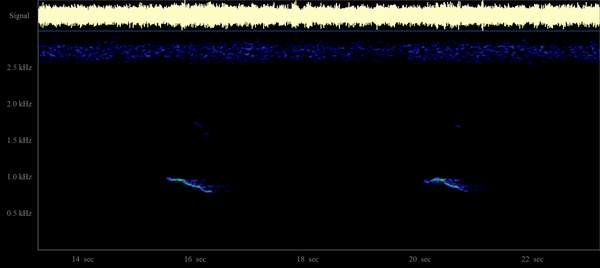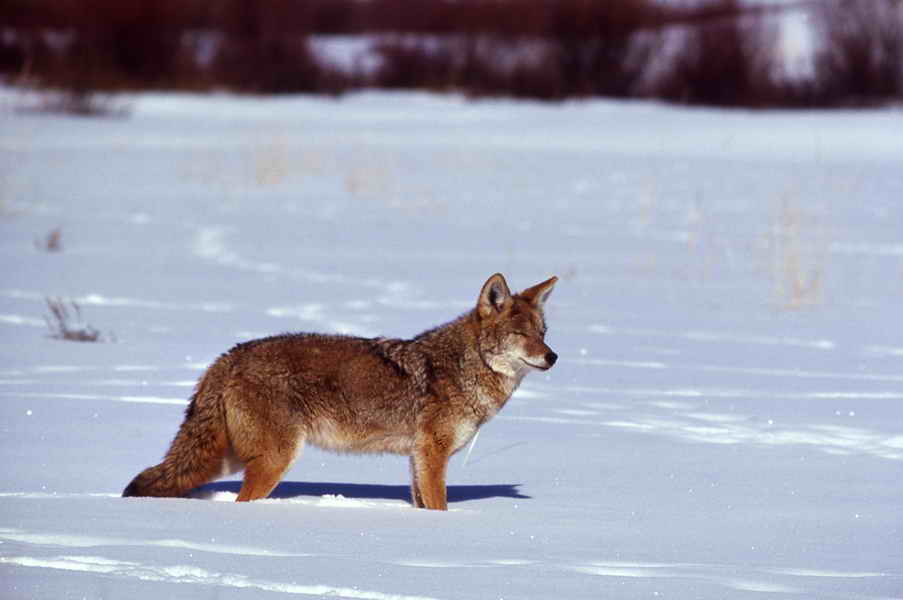
1. Coyote Vocals - (Canus latrans) - The Coyote (Canis latrans) enjoys the most extensive natural range of any terrestrial mammal. These medium-sized canids are currently found across most of the continental United States and Canada, and southward to the Isthmus of Panama. There is significant variation in size between coyotes from different regions. The largest come from northern environs where individuals weighing up to 75 pounds have been recorded. Those from the arid regions of Mexico, on the other hand, average 25 pounds. Coyotes average 20 inches at the shoulder with a body and tail length of 3-1/2 feet.
Below we have listed some of our better Coyote recordings with the date of their recording along with a graphical representation in the form of a Spectrograph of each recording:
Recording number 1: Recorded in SE Louisiana March 13th 2010. Very close range recording of a pair of Coyotes.
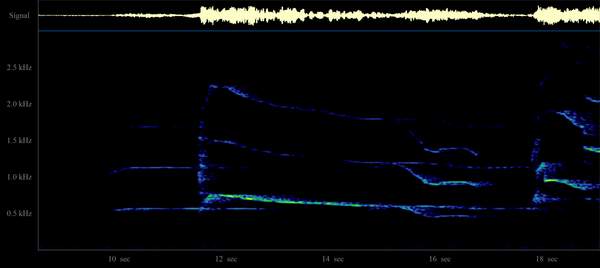
Recording number 2: Coyotes recorded in SE Louisiana in March 2008.
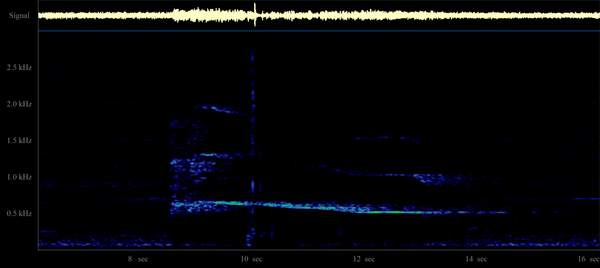
Recording number 3: Recorded in Anderson County, Texas near the Neches River in May 2007.
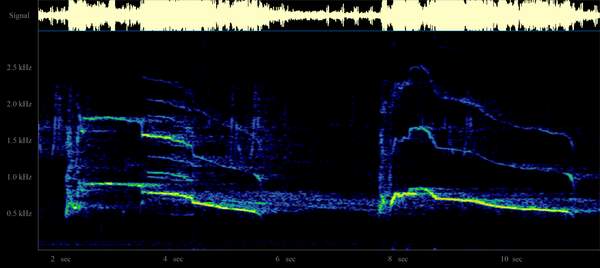
Recording number 4: Recorded in Freestone County, Texas, August 2006.
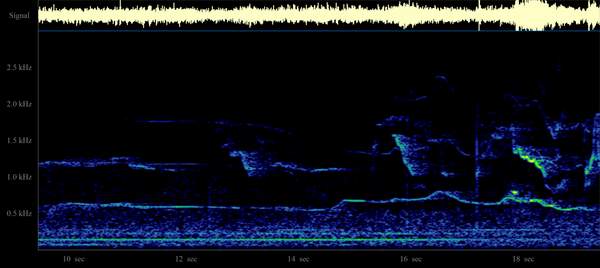
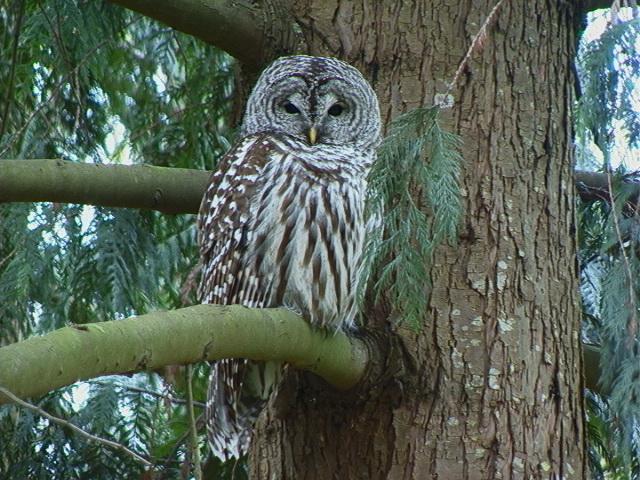
2. Barred Owl Vocals - (Strix varia) - The Barred Owl has a body length of 16 - 24 inches, a 3 1/2 foot wingspan, and weighs 1 1/2 - 2 pounds. Typical Barred Owl habitat consists of forests with some mature trees near open country. The historic range encompassed the eastern half of the United States, but recently the owl’s range is expanding into western North America. The Barred Owl is a vocal bird and it can utter a wide variety of vocalizations from hoots to screams, and barks to laughter. Its most distinctive call sounds similar to “Who cooks for you, who cooks for you all.”
Recording number 1: Recorded in Montgomery County, Texas, June 2009. Nice example of an Owl scream.
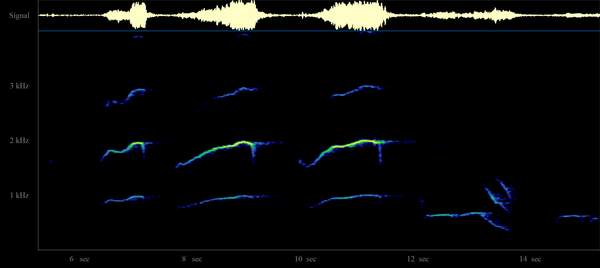
Recording number 2: Recorded in SE Louisiana April of 2008. Another example of how Owls can scream.
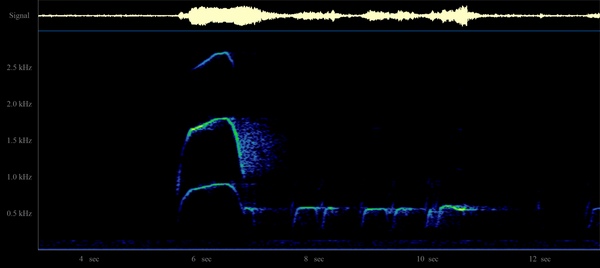
Recording number 3: Recorded in SE Louisana on March 24th, 2007. Classic "Who cooks for you" sequence.
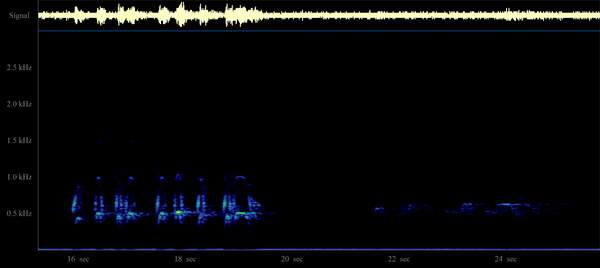
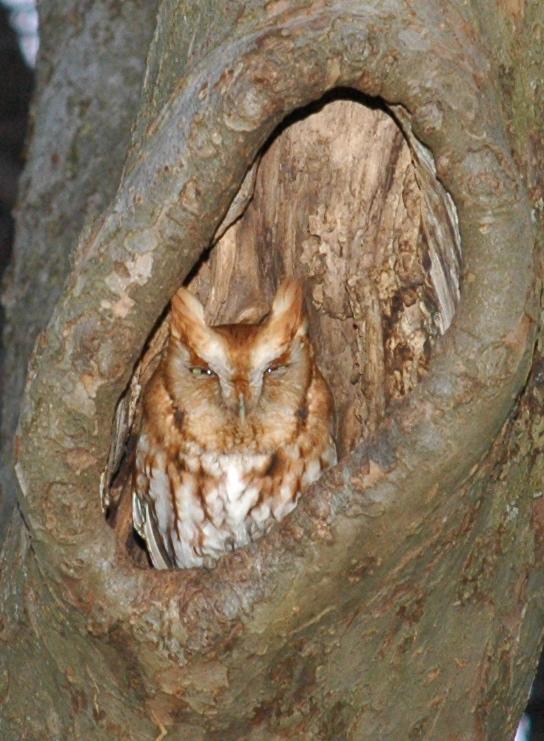
3. Eastern Screech Owl - (Megascops asio) - Adults range from 6-10 inches in length and weigh 4-9 oz. They have either rusty or dark gray intricately patterned plumage which works well as camoflage against tree bark. The species is stocky, short-tailed and broad-winged, they have a large round head with ear tufts, yellow eyes and a yellowish bill. Rusty birds are more common in the southern parts of the range; pairings of the two color variants do occur. The color variations are commonly referred to as "red-phase" and "gray-phase".
Recording number 1: Recorded in Ellis County, Texas, near Midlothian in September 2006.
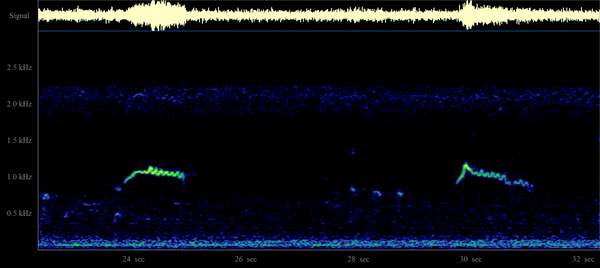
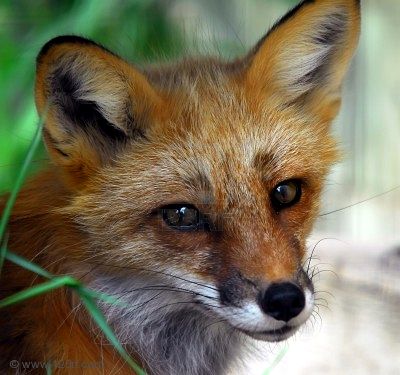
4. Red Fox Vocals - (Vulpes vulpes) - The Red Fox (Vulpes vulpes) is the largest of the true foxes, as well as being the most geographically spread member of the Carnivora, being distributed across the entire northern hemisphere from the Arctic Circle to North Africa, Central America, and the steppes of Asia. Despite its name, the species often produces individuals with abnormal colourings, including albinos and melanists. The Red Fox has a long history of association with humans, having been extensively hunted as a pest and furbearer for centuries, as well as being prominently represented in human folklore and mythology.
Recording number 1: Recorded in Montgomery County, Texas, in the Sam Houston National Forest June, 2009.
